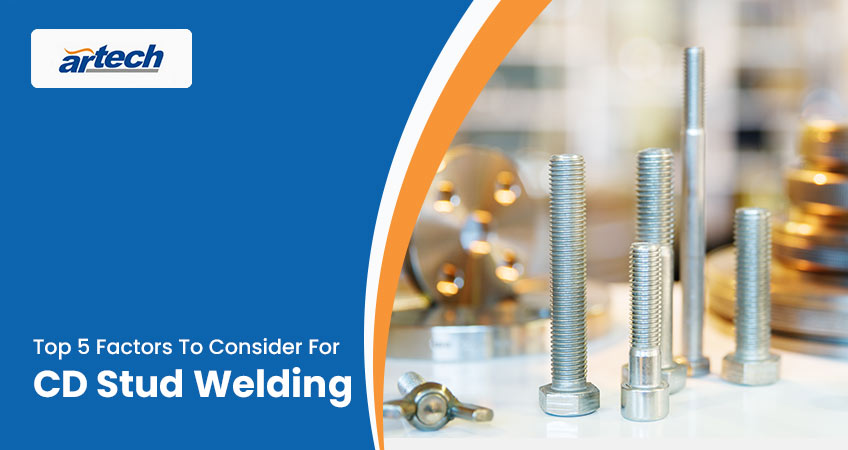Stud welding is a diverse welding type that can be used for many different materials welding for a wide range of results. It is appropriate to say- stud welding has proven its mettle in the field of manufacturing operations. It is known for its visually appealing aesthetics, accuracy, speed, and cost-efficiency. Ranging from steel manufacturing, bridge construction, mechanical engineering, plant engineering, shipbuilding, electrical industries to household materials, and more, the application of stud welding is wide.
If you are planning to use stud welding as a fastening system, there are many factors to consider before choosing the combination of tools and equipment you will require. The first thing is to select which type of stud welding you will need to use – CD Stud Welding or Drawn Arc Stud Welding.
(Here’s a blog on the key differences between CD Stud Welding or Drawn Arc Stud Welding).
Whichever type of welding you choose, you can always rely on Artech Welders for the right combination of tools, stud welding machines, and technical support to achieve your welding goals.
Both Capacitor Discharge Stud Welding and Drawn Arc Stud Welding possess their unique advantages. It is crucial to understand the various factors of your chosen type of welding for the best welding results. When we talk about the Capacitor Discharge (CD) Stud Welding process, there are top 5 factors that you must consider before starting the welding. Let’s check out!
SIZE
The size of the studs to be welded determines most other factors in the CD Stud Welding. If you want to weld on thin parent materials, CD welding is the best. However, for thick parent material, choose Drawn Arc. Do not consider CD welding if you need to increase size as this type of welding does not support exceeding dimensions.
SURFACE
The surface on which the weld is to be made should be considered. CD Stud Welding gives excellent weld aesthetics when the surface is plate or sheet. It becomes challenging to make strong welds on a rough surface due to the shorter weld time as compared to other stud welding types. The chosen surface must be clear, without contaminants such as oil, dirt, rust, etc.
TIME
CD Stud Welding is a very fast type of welding. The weld cycle is less than 10 milliseconds. Since the weld cycle is so rapid, considering the timing and weld penetration becomes crucial. Welders must properly calibrate the tools for the perfect results. Welding material, stud material, and the dimension of the stud plays important role in calibration. The welding works under low temperatures, making it a suitable choice for small welds.
MATERIALS
Welding material is an important factor in successful welding because it helps to overcome certain limitations. The choice of welding material can also help to improve productivity and provide extra safety assurance. Consider factors such as whether working with low or high temperatures, whether need the material to be resistant against chemicals or oil residues and if the more or less aesthetic finish is on their object. Commonly used materials in stud welding are Steel, Copper, Aluminium, Brass.
POSITION
The position you’re welding at will have an impact on how strong the weld will be. You need to pay attention to this when you are creating your weld so it’s easy to see when it’s done and can be cleaned up easily. The difference between a good and bad weld can be noticed even from a few inches away. A tiny little flaw in the welded area will be enough to cause an issue for the product as it may fail or wear out prematurely.
BOTTOM LINE
CD Stud welding is undoubtedly one of the most used stud welding methods. It is crucial to pay attention to these 5 factors when choosing CD stud welding for your manufacturing processes. You must choose the best Stud Welding Machines by Artech Welders for assured, quality welding results. Get in touch with our team to customize your stud welding or order in bulk today!
Shift to better welding with Artech Welders!

